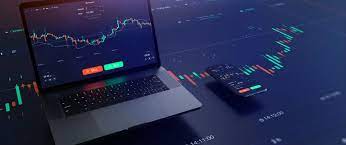
Mastering Cfd trading: Strategies for Success in Financial Markets
Cfd trading, or Contract for Difference, is a popular way of trading financial instruments without actually owning them. It is a derivative product that allows traders to speculate on the price movements of assets such as stocks, indices, currencies, and commodities. CFDs are highly leveraged products, meaning that traders can take bigger positions with smaller amounts of capital. However, this also means that there is a high risk of losing money if the market moves against you. In this blog post, we will explore some strategies for mastering Cfd trading and increasing your chances of success in financial markets.
Develop a Trading Plan
One of the most important steps in mastering cfd trading is developing a trading plan. This should include your objectives, risk management strategy, and entry and exit rules. You should also consider your preferred trading style (e.g., day trading or swing trading) and the time frames you want to trade. A good trading plan will help you stay disciplined and focused on your goals.
Use Technical Analysis
Technical analysis involves studying charts and using indicators to identify patterns and trends in price movements. This can help you make informed decisions about when to enter or exit trades. Some popular technical indicators used by CFD traders include moving averages, MACD, RSI, and Bollinger Bands.
Stay Up-to-Date with News
CFD traders need to stay up-to-date with the latest news and events that could affect their chosen markets. This includes economic data releases, company earnings reports, geopolitical developments, and central bank announcements. By keeping abreast of these factors, you can make more informed decisions about when to open or close trades.
Manage Your Risk
Risk management is crucial in Cfd trading because leverage can amplify both profits and losses. One common strategy is to use stop-loss orders to limit potential losses. You should also consider your risk-reward ratio, which refers to the amount of potential profit compared to the amount of potential loss in a trade. A good rule of thumb is to aim for a risk-reward ratio of at least 1:2.
Practice with a Demo Account
Finally, it’s important to practice Cfd trading with a demo account before using real money. This will allow you to test out different strategies and get familiar with the trading platform without risking your own capital. Most CFD brokers offer demo accounts that simulate real market conditions, so take advantage of this opportunity.
short:
Mastering Cfd trading requires discipline, patience, and a willingness to learn from both successes and failures. By developing a trading plan, using technical analysis, staying up-to-date with news, managing your risk, and practicing with a demo account, you can increase your chances of success in financial markets. Remember that Cfd trading carries significant risks and is not suitable for all investors. Always do your own research and seek professional advice if necessary before making any investment decisions.